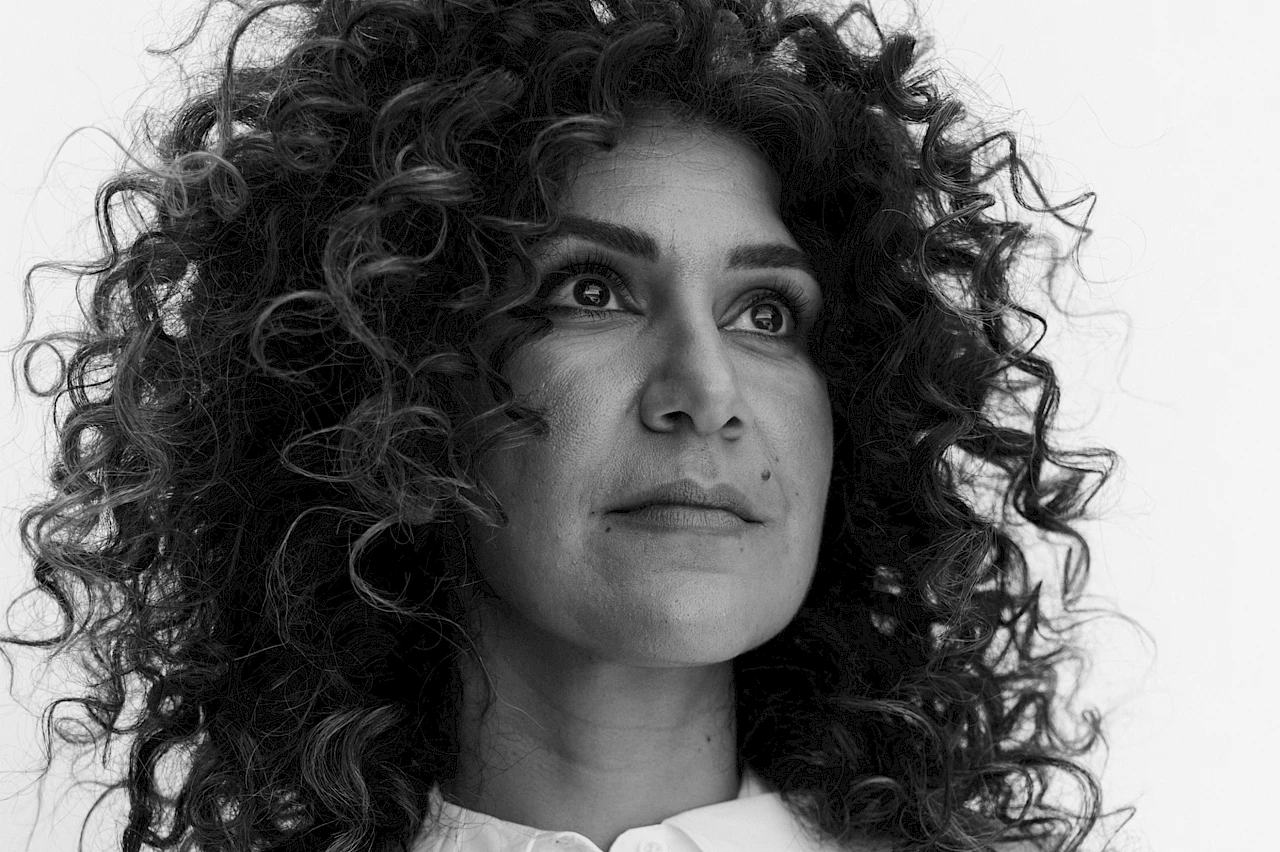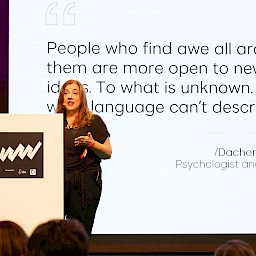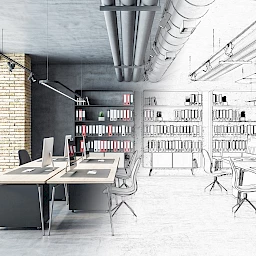How are work, leadership and spatial environments changing in a world of work increasingly defined by purpose, responsibility and attitude? Architect and entrepreneur Apameh Schönauer speaks at the IBA Forum about design as an attitude, about equality, leadership culture and why empathy will become the most important skill of the future.
Mrs Schönauer, you are an architect, an entrepreneur and a public figure. Which experiences from these very different roles shape your view of the spaces in which people work and develop?
I understood early on that spaces are more than architecture – they are always a reflection of our attitude. As an architect, I think in structures; as an entrepreneur, in possibilities; and as a public figure, in terms of responsibility. For me, these perspectives converge in the question: how do we create places where people can flourish rather than merely function?
As the founder of Apameh Studios, you take an interdisciplinary approach that combines architecture, interior design and social responsibility. How do values such as equality and cultural change influence your projects?
At Apameh Studios, we understand design as a contribution to society. For us, architecture and interior design are tools for making values visible – values such as equality and openness. We ask: what does a space that truly welcomes everyone feel like? Cultural change begins where design consciously takes a stand.
How is the way people work together changing today, and how important is the physical workplace in this context?
Collaboration today is becoming more fluid, more empathetic and less hierarchical. People seek purpose, freedom and connection. The physical workplace acts as a resonance space: it can strengthen trust and spark creativity – or do the exact opposite. Spaces reveal how seriously a company takes its own culture.
What can companies do to create spaces and structures that enable greater inclusion, creativity and well-being?
Companies should think less in terms of square footage and more in terms of relationships. A space that fosters creativity and inclusion emerges through diversity in its design: places of retreat, open zones, shared rituals. And above all: through participation. When people are invited to co-shape their workplace, genuine engagement can grow.
When you look to the future, what does good work look like to you in ten years’ from now?
In the future, good work will no longer be measured by performance but by impact. It will combine purpose, autonomy and social responsibility. I hope for a working world in which empathy is recognised as a core skill – and in which success and humanity are no longer opposites.
What motivates you personally to engage so deeply with topics such as leadership and corporate culture?
I am driven by the conviction that leadership is the most important creative space of our time. I have witnessed how good leadership enables people to grow, and how destructive structures can hold them back. That is why I engage so deeply with this topic: culture does not emerge by itself – it must be consciously cultivated.
How would you define modern leadership today, and what role does diversity play in it?
For me, modern leadership means opening up spaces rather than controlling them. Diversity is not a trend but a foundation. Different perspectives create friction, and friction creates relevance.
You are strongly committed to supporting women in leadership. Where do you see the greatest leverage for achieving true equality?
The greatest leverage for equality lies in structures, not in individual initiatives. As long as systems are built on old power dynamics, women will continue to encounter invisible barriers. We need more transparency, flexible life models and leadership cultures that view care not as a weakness but as a strength.
Please also read

What barriers do women face in the workplace? What has helped you personally to overcome them?
The biggest barriers are often internal – self-doubt, perfectionism, the feeling that you have to be different. What helped me was allowing myself not to fit in, but to forge my own path. My husband in particular, but also mentors and networks, gave me enormous strength. No one grows alone.
Which structures would companies need to change to make career paths for women a matter of course?
Companies must take active responsibility for equality: fair pay, parental leave models for all genders, clear development programmes for women. Above all, we need role models – women in visible positions who demonstrate that career and self-determination are not mutually exclusive. I had no female role models at the time.
What advice would you give to women who want to find their own career path and realise their personal aspirations?
I believe we find our own path when we stop comparing ourselves to others. The most important compass is our own voice – what truly moves us. My advice: follow your curiosity, not your fears. And surround yourself with people who make you braver, not smaller.
Thank you for talking with us, Mrs Schönauer.






